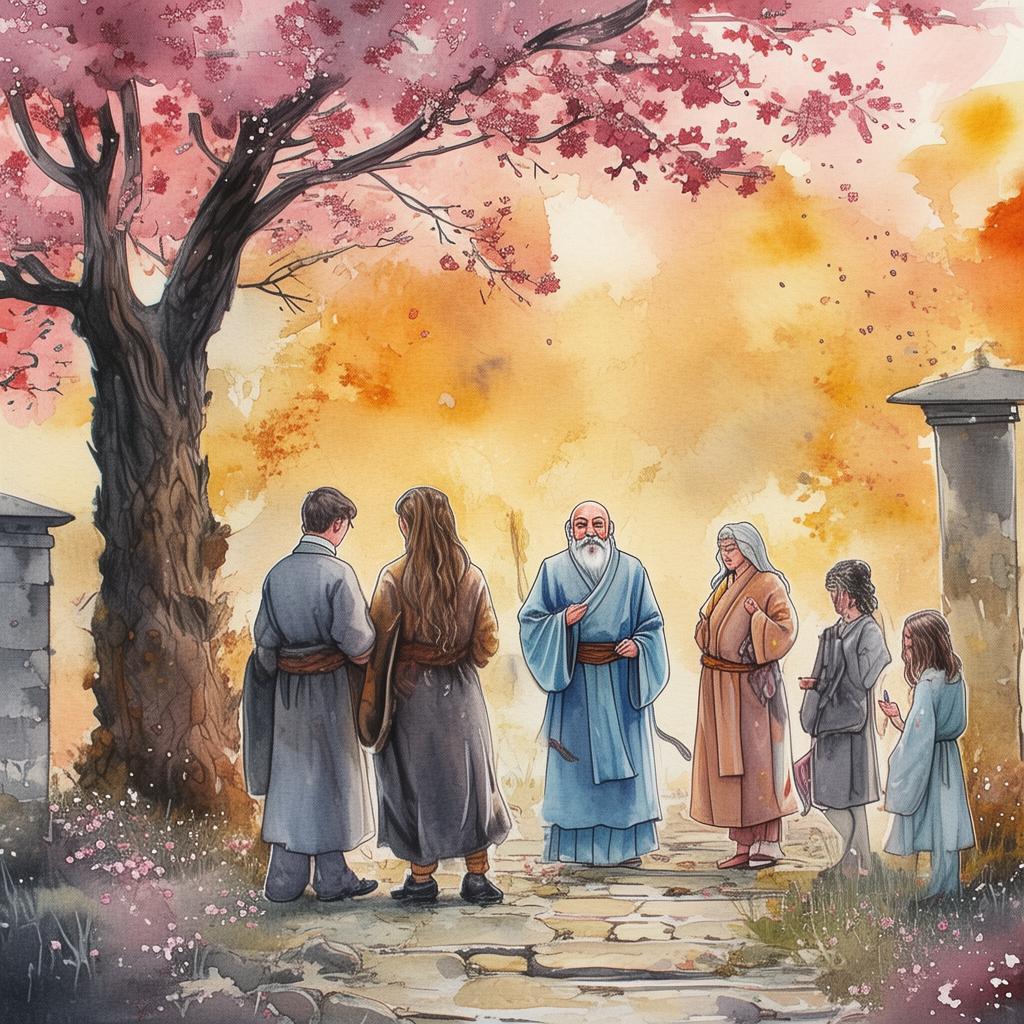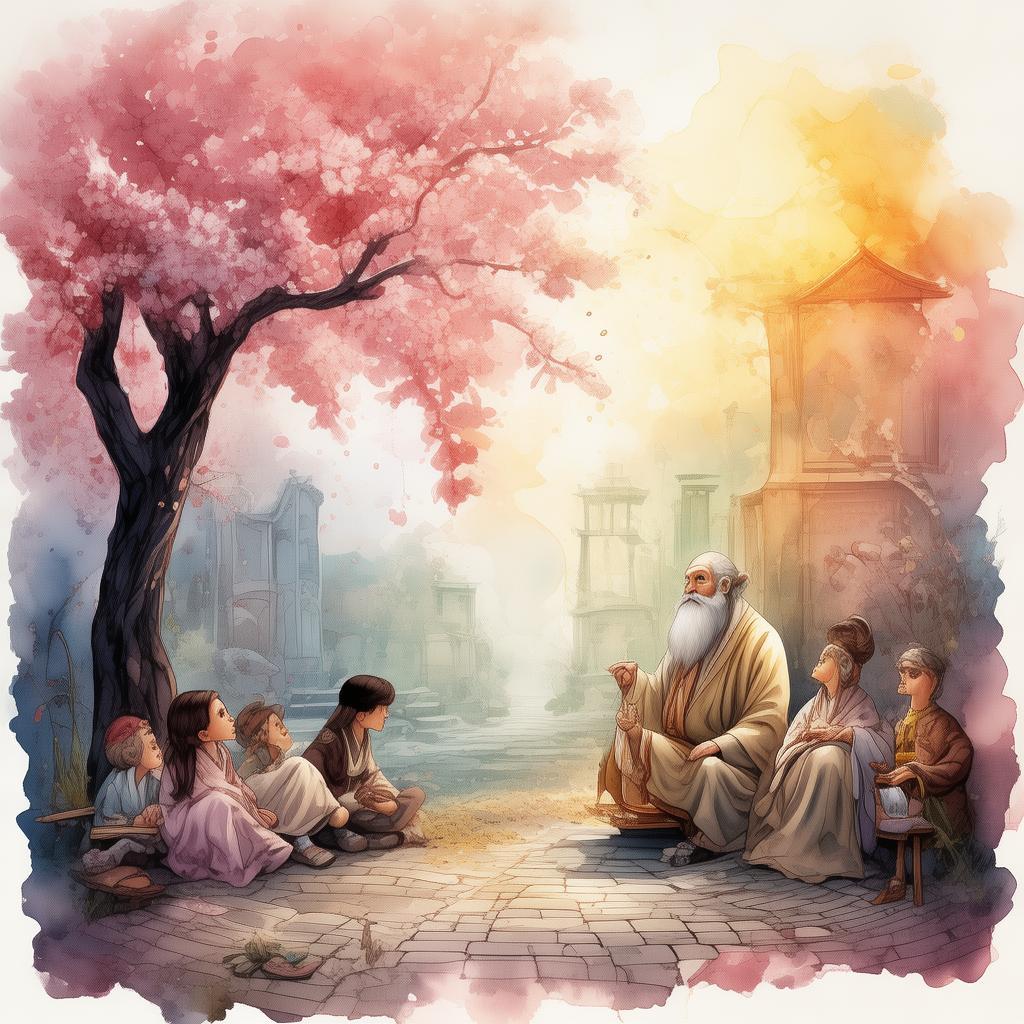Whispers of the Scholar's Sword: The Battle of Wuxing Mountain
In the heart of ancient China, during the tumultuous era of the Martial Revolution, there lived a young scholar named Ming. Ming was known for his profound knowledge of the classics and his unwavering determination to challenge the corrupt order of the land. His teacher, Master Feng, was a revered warrior and philosopher, who saw in Ming the seeds of a new order, one that would unite scholars and martial artists in the fight for justice.
As Ming delved deeper into his studies, he discovered a cryptic scroll within the ancient library of his teacher. It spoke of a legendary weapon known as the Scholar's Sword, a weapon imbued with the essence of the five elements—wood, fire, earth, metal, and water. It was said that the sword could bring peace to the land, but it required the blood of a true scholar to be forged.
Ming, driven by his longing for a new order, decided to undertake the perilous journey to find the rare materials needed to craft the Scholar's Sword. His quest led him to the mysterious Wuxing Mountain, where the elements were said to manifest in their purest forms.
Upon reaching the mountain, Ming was greeted by the ancient guardian, a giant stone statue carved in the likeness of a dragon. The guardian tested Ming's worthiness by presenting him with riddles and challenges. Ming's intellect and courage were proven, and he was allowed to proceed to the heart of the mountain, where the elements awaited him.
In the depths of the mountain, Ming encountered the elemental spirits, each demanding a part of his being. He struggled, his body trembling as the essence of each element tried to consume him. Yet, with each trial, Ming's resolve grew stronger, and he managed to absorb the essence of the elements, leaving him with the power to control them at will.
As the final trial approached, Ming faced the spirit of the earth itself, a massive, serpentine figure that threatened to crush him. In a moment of desperation, Ming chanted an ancient incantation, and the Scholar's Sword began to take shape in his hand, glowing with the colors of the elements.
With the sword in hand, Ming confronted the spirit of the earth, and the battle was fierce. The ground trembled, and the trees around them swayed as the power of the sword clashed with the spirit's earthy might. Ming's mastery of the elements allowed him to manipulate the terrain, creating mountains and chasms to outmaneuver his opponent.
Finally, the spirit of the earth, recognizing the strength and purity of Ming's intentions, submitted. Ming emerged victorious, the Scholar's Sword now complete, a weapon of both wisdom and power.
Returning to his teacher, Master Feng, Ming presented the completed sword. Master Feng saw the potential of the weapon and knew that Ming's destiny was tied to it. He tasked Ming with a mission: to challenge the current ruler and ignite a revolution that would bring a new order to the land.
Ming accepted the mission, understanding that the path ahead would be fraught with danger and betrayal. He set out, armed with the Scholar's Sword and a heart full of hope, to forge a new era for the people of China.

As Ming traveled the land, he encountered many who shared his vision. Some were martial artists, others scholars, and still others were ordinary folk who had suffered under the oppressive regime. Ming united them, forming a movement that grew in strength and influence.
The ruler, a cruel and ambitious man, was aware of Ming's rise and sought to crush the revolution before it could gain momentum. He summoned his own martial artists, a group of formidable warriors, to eliminate Ming and his followers.
The final battle took place on the fields outside the capital city, where the revolution had gathered its strength. Ming stood atop a hill, the Scholar's Sword gleaming in the sunlight. He faced the ruler and his warriors, his eyes filled with the resolve of a man who knew he might not return.
The battle was a spectacle of incredible power and skill. Ming fought with a grace and ferocity that left his opponents in awe. He used the Scholar's Sword to harness the elements, creating walls of fire, pillars of earth, and whirlwinds of wind that scattered the enemy forces.
As the battle raged on, Ming fought not just for his life, but for the lives of all who had supported him. His heart was pure, and his intentions were just. With each strike of the sword, he drove home the message of his revolution: that power should be wielded for the benefit of the people, not for the greed of the few.
In the end, Ming faced the ruler alone, the Scholar's Sword in hand. The ruler, seeing the truth in Ming's eyes, realized that his cause was lost. He sheathed his own weapon and offered his surrender.
With the ruler's surrender, the revolution was successful. Ming had forged a new order, one that respected the intellect and spirit of the people. The Scholar's Sword, now a symbol of the revolution, was preserved, a testament to the power of knowledge and the courage of a single man to change the world.
The tale of Ming and the Scholar's Sword spread far and wide, inspiring generations to come. And so, the era of the Martial Revolution came to an end, and a new order was born, built on the principles of wisdom and justice.
✨ Original Statement ✨
All articles published on this website (including but not limited to text, images, videos, and other content) are original or authorized for reposting and are protected by relevant laws. Without the explicit written permission of this website, no individual or organization may copy, modify, repost, or use the content for commercial purposes.
If you need to quote or cooperate, please contact this site for authorization. We reserve the right to pursue legal responsibility for any unauthorized use.
Hereby declared.









